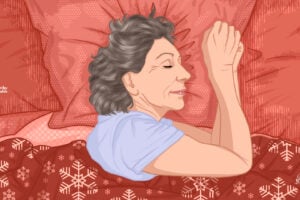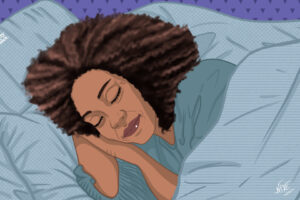In Praise Of The Power Nap
It’s no secret that most of us are chronically underslept. Especially women in their middle-aged. According to National Health Statistics, more than one in four women reported experiencing difficulty falling and staying asleep four or more times during the week. The report also acknowledged that sleep duration changes with age, but that sleep duration and quality are both impacted by shifts in reproductive hormone levels.
While naps do not necessarily make up for inadequate or poor quality nighttime sleep, a short nap of 20-30 minutes can help to improve mood, alertness and performance. Sleep experts have found that daytime naps can improve many things: boost creativity, reduce stress, improve perception, stamina, motor skills and accuracy, enhance your sex life, aid in weight loss, reduce the risk of heart attack, boost memory.
Daytime naps can be one way to treat sleep deprivation – writes Dr Sara Mednick in her book, Take a Nap! Change Your Life-. You can get incredible benefits from 15 to 20 minutes of napping. You reset the system and get a burst of alertness and increased the motor performance.
Yes, a power nap is magical. It’s the most effective way to wake up and refresh your mind when you’re feeling tired. But keep it short. A Nasa study found that sleepy pilots had a 45% improvement in performance and a 100% improvement in alertness after a short nap. But the key is to keep the nap short (about 30 minutes).
For a quick boost of alertness- Sara Mednick says- a 10-to-20-minute power nap is adequate for brightening your mood and boost memory. For cognitive memory processing, however, a 60-minute nap may do more good. Including slow-wave sleep helps with remembering facts, places and faces. The downside: some grogginess upon waking. Finally, the 90-minute nap will likely involve a full cycle of sleep, which aids creativity and emotional and procedural memory, such as learning how to ride a bike. Waking up after REM sleep usually means a minimal amount of sleep inertia.
According to the National Sleep Foundation, naps can be typed in three different ways:
- Planned napping (also called preparatory napping) involves taking a nap before you actually get sleepy. You may use this technique when you know that you will be up later than your normal bedtime or as a mechanism to ward off getting tired earlier.
- Emergency napping occurs when you are suddenly very tired and cannot continue with the activity you were originally engaged in. This type of nap can be used to combat drowsy driving or fatigue while using heavy and dangerous machinery.
- Habitual napping is practised when a person takes a nap at the same time each day. Young children may fall asleep at about the same time each afternoon or an adult might take a short nap after lunch each day.
Choose your favourite routine and don’t feel guilty, you are in a good company: Winston Churchill, John F. Kennedy, Ronald Reagan, Napoleon, Albert Einstein, Thomas Edison, Albert Einstein, Margareth Tacher and George W. Bush are known to have valued a good afternoon nap.




